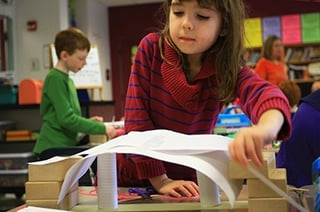 Teachers often tell us that kids gravitate towards engineering when they learn how engineers help people. EiE’s real-world connections are often focused on helping others, and our civil engineering units exemplify that. Civil engineering is an exciting field for kids to consider: they all have experience with buildings and infrastructure, and they may not be aware of the career opportunities available to civil engineers. As infrastructure in the United States ages, the need for skilled civil engineers increases—the US Department of Labor projects that the demand for civil engineers will increase 8% by 2024. These five in-school and out-of-school-time units could kick-start an interest in civil engineering for your kids, and show them how some innovative engineering can help countless people.
Teachers often tell us that kids gravitate towards engineering when they learn how engineers help people. EiE’s real-world connections are often focused on helping others, and our civil engineering units exemplify that. Civil engineering is an exciting field for kids to consider: they all have experience with buildings and infrastructure, and they may not be aware of the career opportunities available to civil engineers. As infrastructure in the United States ages, the need for skilled civil engineers increases—the US Department of Labor projects that the demand for civil engineers will increase 8% by 2024. These five in-school and out-of-school-time units could kick-start an interest in civil engineering for your kids, and show them how some innovative engineering can help countless people.
1. A Slippery Slope: Engineering an Avalanche Protection System
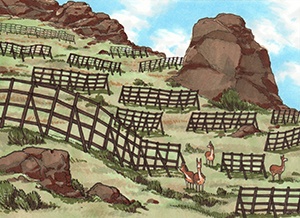 One of our newest Engineering Adventures units features the world-travelling duo India and Jacob visiting a village in southern Peru. Kids are challenged to design an avalanche protection system that falls within spatial and budgetary constraints while still protecting the village.
One of our newest Engineering Adventures units features the world-travelling duo India and Jacob visiting a village in southern Peru. Kids are challenged to design an avalanche protection system that falls within spatial and budgetary constraints while still protecting the village.
Real-world connections: Watch this video depicting the assembly of an avalanche protection system, or read up on how radar systems are helping engineers build better defenses against avalanches.
2. To Get to the Other Side: Designing Bridges
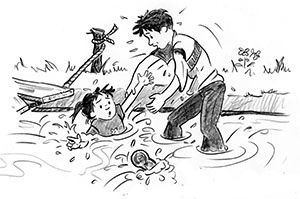 This in-school unit features the storybook Javier Builds a Bridge, about a boy who needs a safe footbridge to get to his island play fort. Students will learn about force, balance, and motion as they learn about a variety of bridge structures and plan, build, and test their own bridges.
This in-school unit features the storybook Javier Builds a Bridge, about a boy who needs a safe footbridge to get to his island play fort. Students will learn about force, balance, and motion as they learn about a variety of bridge structures and plan, build, and test their own bridges.
Real-world connections: Check out this History Channel documentary about New York City bridges, or encourage students to think outside the box by showing them a proposal by a Parisian architecture firm—a trampoline bridge!
3. Shake Things Up: Engineering Earthquake-Resistant Buildings
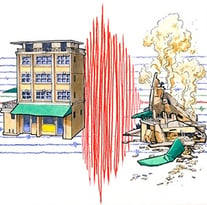 In this Engineering Adventures unit, kids join India and Jacob in Haiti to learn about earthquakes. They will learn how to engineer model buildings that can withstand quakes, then develop building codes to inform others about how to build earthquake-resistant buildings.
In this Engineering Adventures unit, kids join India and Jacob in Haiti to learn about earthquakes. They will learn how to engineer model buildings that can withstand quakes, then develop building codes to inform others about how to build earthquake-resistant buildings.
Real-world connections: Check out National Geographic’s article “Safe Houses,” about the ways that engineers in earthquake-prone areas all over the world design earthquake-resistant structures, or watch this National Science Foundation video showing a model building being tested on the largest shake table in the world!
4. A Stick in the Mud: Evaluating a Landscape
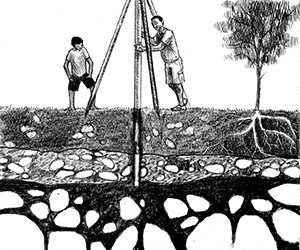 In this unit, students meet Suman, the protagonist of Suman Crosses the Karnali River. Suman’s village needs a new TarPul bridge, but there are many factors to consider, like the villagers’ needs, the soil composition, and erosion potential. Kids will consider these factors as they select the best site to build the TarPul.
In this unit, students meet Suman, the protagonist of Suman Crosses the Karnali River. Suman’s village needs a new TarPul bridge, but there are many factors to consider, like the villagers’ needs, the soil composition, and erosion potential. Kids will consider these factors as they select the best site to build the TarPul.
Real-world connections: Watch this video about a real EiE classroom that raised funds to help villagers in Gothdanda Village, Nepal rebuild their TarPul!
5. Don’t Runoff: Engineering an Urban Landscape
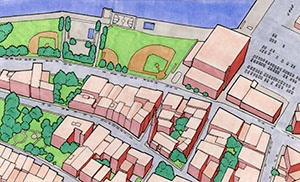 This Engineering Everywhere unit is all about preventing urban runoff. Youth learn how rain in urban areas carries pollution into local bodies of water when it can’t absorb into the pavement or rooftops, which jeopardizes the environment. They’ll learn about new technologies like permeable pavement and green roofs, then they’ll engineer a model city designed to prevent harmful runoff.
This Engineering Everywhere unit is all about preventing urban runoff. Youth learn how rain in urban areas carries pollution into local bodies of water when it can’t absorb into the pavement or rooftops, which jeopardizes the environment. They’ll learn about new technologies like permeable pavement and green roofs, then they’ll engineer a model city designed to prevent harmful runoff.
Real-world connections: Check out our context-setting video, and this video explaining the effects of urban runoff in New York City and California.








